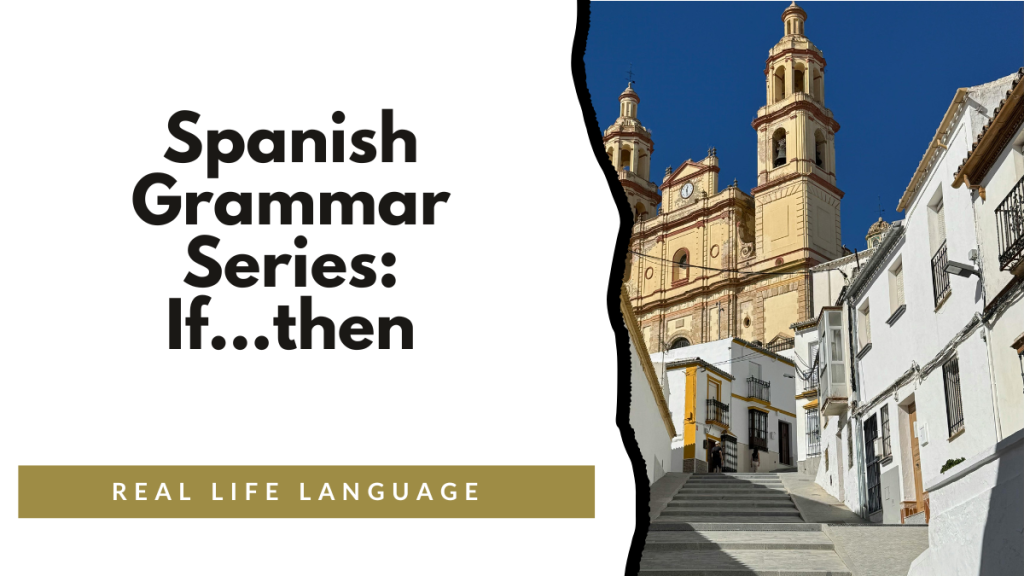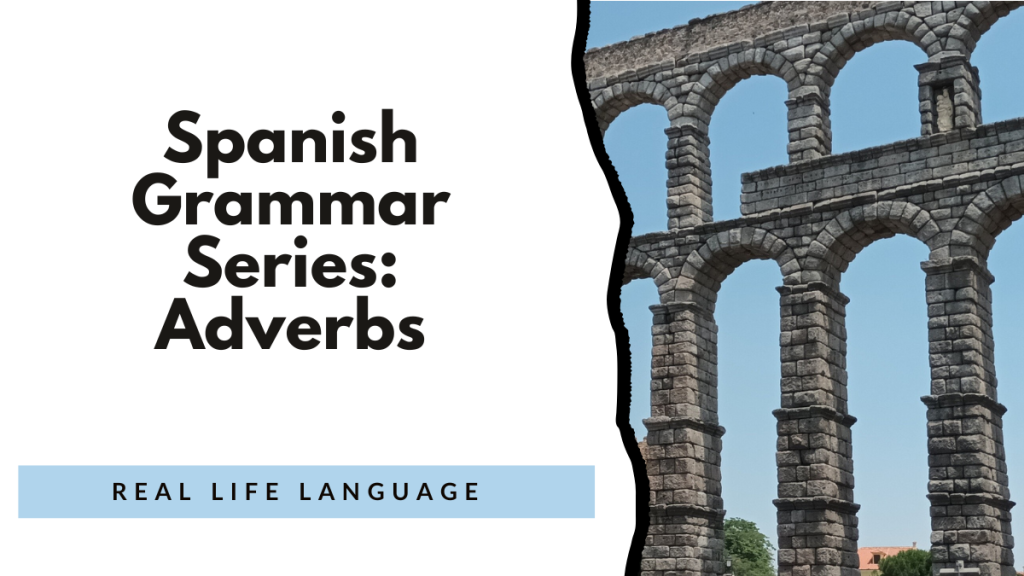The Present Progressive & the Gerund
(El Presente Progresivo y el Gerundio)
The present progressive is used to describe actions that are happening right now—what someone is doing at this very moment. This structure helps speakers emphasize that an action is currently in progress.
At the center of this construction is the gerund (el gerundio), the Spanish equivalent of the English “-ing” form. The gerund is most commonly used with the verb estar to form the progressive tenses, allowing learners to express ongoing actions clearly and naturally in Spanish.
1) Function and Meaning
- The present progressive emphasizes an action that is happening right now or in this moment of speaking.
- The simple present tense in Spanish can also describe ongoing actions, but the present progressive highlights that the action is currently in progress.
Compare:
- Yo estudio español. → I study Spanish. / I’m studying Spanish (general habit).
- Estoy estudiando español. → I am studying Spanish (right now).
2) Formula
Subject + Estar (present tense) + Gerundio (-ando / -iendo)
| Subject | Form of “estar” | + | Example Gerund | Sentence |
| yo | estoy | + hablando | Estoy hablando. → I am speaking. | |
| tú | estás | + comiendo | Estás comiendo. → You are eating. | |
| él / ella / Ud. | está | + escribiendo | Está escribiendo. → He/she is writing. | |
| nosotros | estamos | + viviendo | Estamos viviendo aquí. → We are living here. | |
| ellos / ellas / Uds. | están | + leyendo | Están leyendo. → They are reading. |
The verb “estar” changes for the subject, but the gerund stays the same.
3) How to Form the Gerund (El Gerundio)
The gerund corresponds to the English -ing form.
Form it from the verb stem + these endings:
| Verb Type | Ending | Example | Gerund | English |
| -AR | -ando | hablar | hablando | speaking |
| -ER | -iendo | comer | comiendo | eating |
| -IR | -iendo | vivir | viviendo | living |
Examples:
- Estoy hablando con mi amigo. → I am speaking with my friend.
- Estamos comiendo pizza. → We are eating pizza.
- Ellos están viviendo en Perú. → They are living in Peru.
4) Irregular Gerunds
Some verbs have spelling changes or stem changes to preserve pronunciation.
a) Stem-Changing –IR Verbs
Only -IR verbs that stem-change in the present tense also stem-change in the gerund — e → i or o → u.
| Infinitive | Change | Gerund | Meaning |
| pedir | e → i | pidiendo | asking for |
| servir | e → i | sirviendo | serving |
| repetir | e → i | repitiendo | repeating |
| decir | e → i | diciendo | saying / telling |
| preferir | e → i | prefiriendo | preferring |
| dormir | o → u | durmiendo | sleeping |
| morir | o → u | muriendo | dying |
Examples:
- Está durmiendo. → He is sleeping.
- Estamos pidiendo comida. → We are ordering food.
b) Spelling Changes for Vowel Stems
If the stem ends in a vowel (after removing -er or -ir), -iendo → -yendo to maintain pronunciation.
| Infinitive | Gerund | English |
| leer | leyendo | reading |
| creer | creyendo | believing |
| caer(se) | cayendo | falling |
| oír | oyendo | hearing |
| traer | trayendo | bringing |
| construir | construyendo | building |
| influir | influyendo | influencing |
Examples:
- Estoy leyendo un libro. → I am reading a book.
- Ellos están trayendo la comida. → They are bringing the food.
c) Reflexive Verbs
With reflexive verbs, place the reflexive pronoun:
- Before the form of estar, or
- Attached to the end of the gerund (add an accent to keep stress).
| Example | Meaning |
| Me estoy duchando. | I am showering. |
| Estoy duchándome. | I’m showering. |
Both are correct.
Accent Rule: When attaching pronouns to a gerund, add an accent to preserve pronunciation (on the vowel before -ndo).
5) Accent Rules for Pronouns
If one or two pronouns attach to the gerund, add an accent on the vowel before the -ndo.
| Example | Rule |
| Estoy leyéndolo. | Accent on e (from leyendo). |
| Estoy diciéndoselo. | Accent on e (from diciendo). |
6) Time Expressions Used with the Present Progressive
| Expression | Meaning |
| ahora | now |
| en este momento | at this moment |
| hoy | today |
| todavía | still |
| por ahora | for now |
| últimamente | lately |
Example:
- Ahora estamos estudiando los verbos. → We’re studying verbs right now.
- Últimamente estoy trabajando mucho. → Lately, I’ve been working a lot.
7) Difference: Present Progressive vs. Simple Present
Both can express ongoing actions, but the present progressive focuses on what’s happening right now.
| Spanish | English | Use |
| Leo un libro. | I read / I’m reading (general). | Habit / routine. |
| Estoy leyendo un libro. | I am reading a book (right now). | Ongoing action. |
8) Other Progressive Tenses with the Gerund
While estar + gerundio makes the present progressive, other tenses can use the same pattern to show past or future ongoing actions.
| Tense | Formula | Example | Meaning |
| Past Progressive | Estaba + gerundio | Estaba leyendo. | I was reading. |
| Future Progressive | Estaré + gerundio | Estaré trabajando. | I will be working. |
| Present Perfect Progressive | He estado + gerundio | He estado estudiando. | I’ve been studying. |
9) When Not to Use the Gerund in Spanish
Spanish uses the gerund only for actions in progress — not as a noun, adjective, or future description like English does.
Incorrect: Estoy yendo al cine mañana.
Correct: Voy al cine mañana. (Future plan → simple present or ir a construction.)
Incorrect: Fumar es malo para tu salud. → “Smoking” (OK in English, but in Spanish use infinitive🙂
Correct: Fumar es malo para la salud. (Use fumar, not fumando.)
Summary rule:
→ Use the gerund only with auxiliary verbs (like estar, seguir, continuar, ir, venir).
10) Other Verbs Commonly Used with the Gerund
The gerund can appear with other verbs to describe continuing, gradual, or repeated actions:
| Verb + Gerund | Meaning | Example |
| seguir / continuar + gerundio | to keep / continue doing something | Sigo estudiando español. → I keep studying Spanish. |
| ir + gerundio | to go on / little by little | Voy mejorando cada día. → I’m improving little by little. |
| venir + gerundio | to have been doing (for some time) | Vengo diciendo esto desde el principio. → I’ve been saying this from the start. |
| andar + gerundio | to go around doing / keep doing | Anda buscando trabajo. → He’s going around looking for work. |
These add nuance to describe duration, repetition, or gradual change.
11) Practice: Fill in the Blanks
Complete each sentence with the correct form of estar + gerundio.
- Yo __________ (hablar) por teléfono.
- Tú __________ (leer) un libro interesante.
- Ella __________ (dormir) en su habitación.
- Nosotros __________ (comer) pizza en la cafetería.
- Ellos __________ (escribir) una carta a su abuela.
Answers:
- estoy hablando
- estás leyendo
- está durmiendo
- estamos comiendo
- están escribiendo
12) Practice with Irregular Forms
Fill in with the correct gerund.
- decir → __________
- leer → __________
- traer → __________
- preferir → __________
- dormir → __________
Answers: diciendo, leyendo, trayendo, prefiriendo, durmiendo
13) Example Mini-Dialogue
A: ¿Qué estás haciendo?
(What are you doing?)
B: Estoy estudiando para el examen. ¿Y tú?
(I’m studying for the exam. And you?)
A: Estoy escuchando música y relajándome.
(I’m listening to music and relaxing.)
14) Common Pitfalls & Fixes
| Wrong | Correct | Explanation |
| Soy leyendo. | Estoy leyendo. | Use estar, not ser, for progressive. |
| Estoy leer. | Estoy leyendo. | Must use gerund form (-ando / -iendo). |
| Voy a yendo. | Voy a ir. | Future action uses infinitive, not gerund. |
| Estoy fumando mañana. | Voy a fumar mañana. | Use ir a + infinitive for future. |
15) Summary Chart
| Element | Spanish | Example | English |
| Formula | estar + gerundio | Estoy comiendo. | I’m eating. |
| -AR ending | -ando | hablando | speaking |
| -ER / -IR ending | -iendo | viviendo | living |
| Irregular spelling | -yendo | leyendo | reading |
| Stem-changing IR verbs | e → i / o → u | durmiendo | sleeping |
| Pronoun placement | before estar or attached | Me estoy bañando / Estoy bañándome | I’m showering |
Why This Tense Matters
The present progressive is essential for:
- Expressing actions in progress
- Describing what’s happening right now
- Narrating real-time events
- Combining with other verbs to show duration or continuation
Learning the gerund also opens the door to other compound structures (seguir + gerundio, ir + gerundio, venir + gerundio) that give your Spanish richer expression and natural fluency.
Building Proficiency for World Language Learners: 100+ High-Interest Activities
Discover over 100 dynamic activities to make world language learning interactive and fun. I wrote this book with some of my favorite activities for educators aiming to build proficiency with high-impact strategies.
Learn more and get your copy here.
5 Weeks of No and Low Prep Fun
Need quick, engaging activities for your class? This free guide includes 25 no-prep and low-prep ideas to save time while keeping students excited about learning.
Download your free copy now.
100s of videos to learn Spanish:

